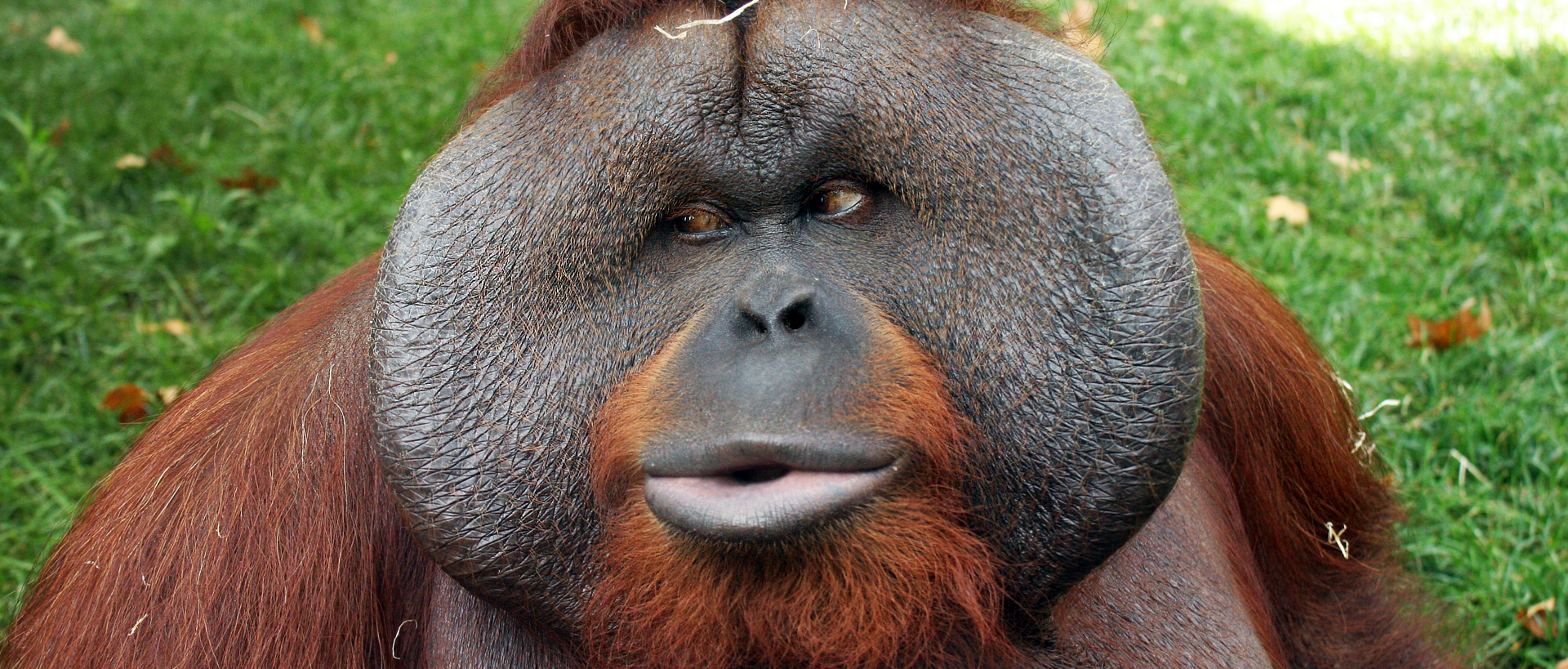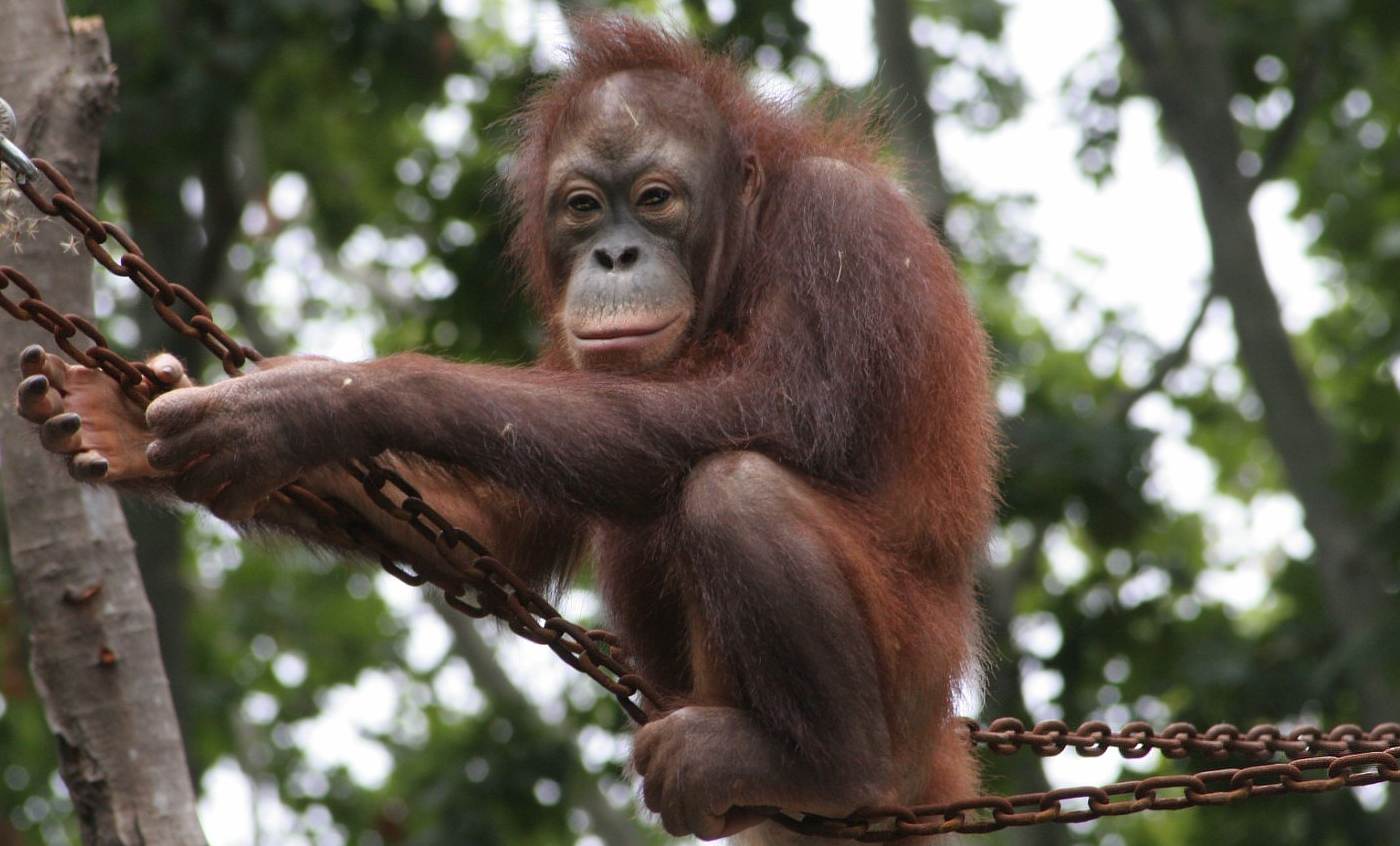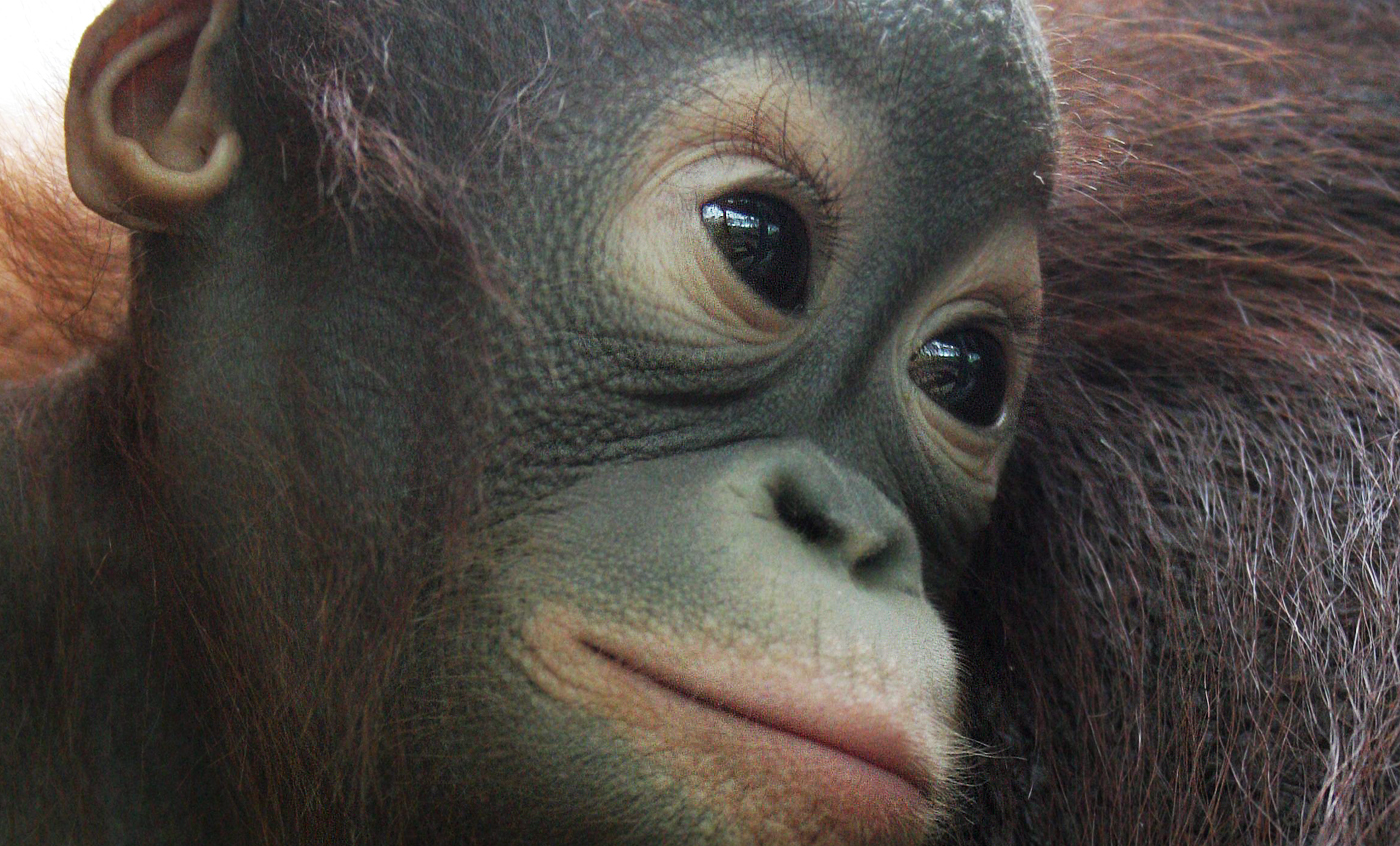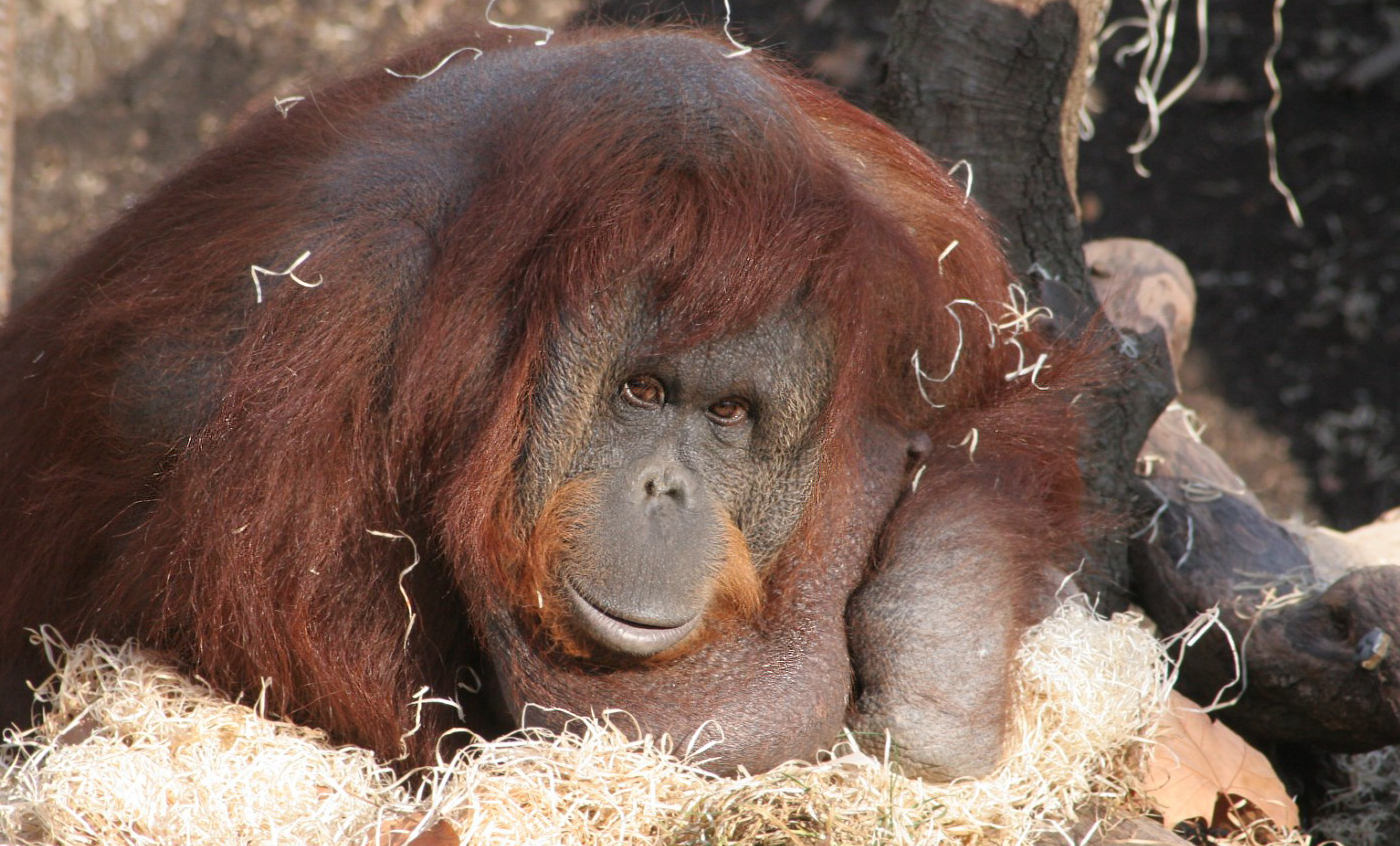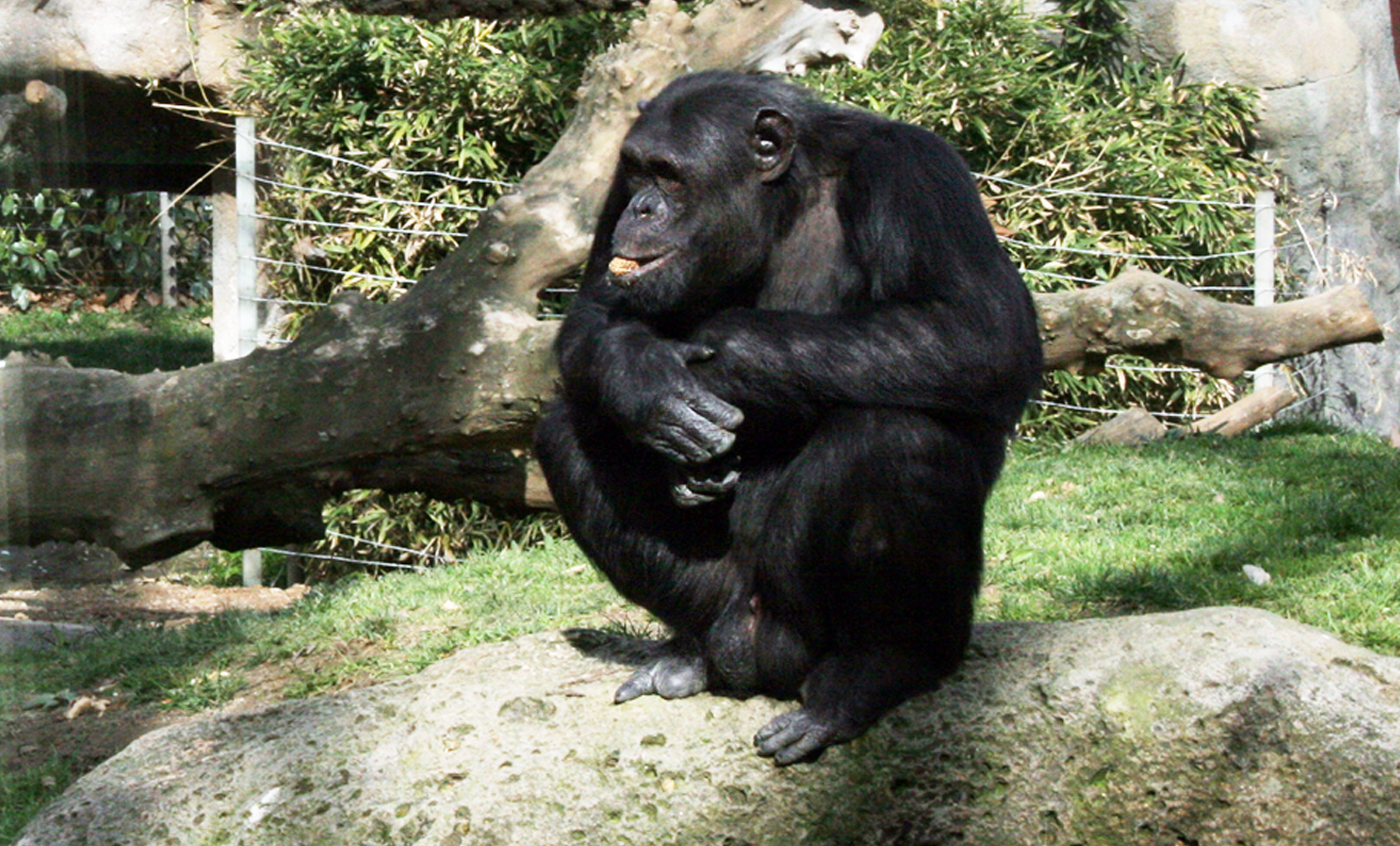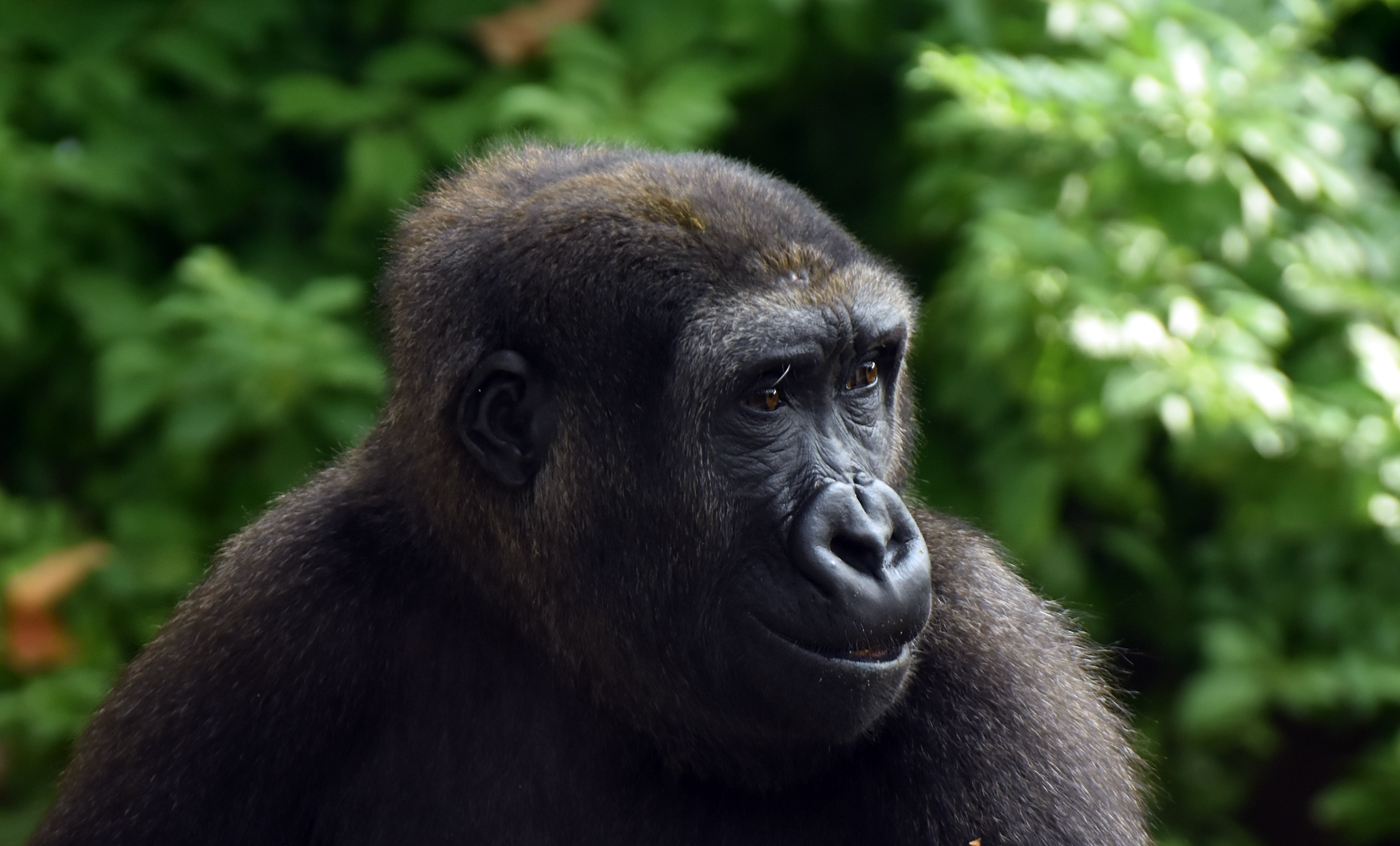Bornean orangutan
Its name in Malay means “man of the forest”, as it is only found in the dense rainforest of Borneo, where it leads a totally arboreal life, although old males sometimes have more earthbound habits.
It does not live in family groups like gorillas or chimpanzees, and generally lives alone or, at most, in pairs.
Adult males develop a large throat poach that gives them a peculiar appearance and which acts as a voice box when they roar.
Breeding program
Natural habit
Borneo.
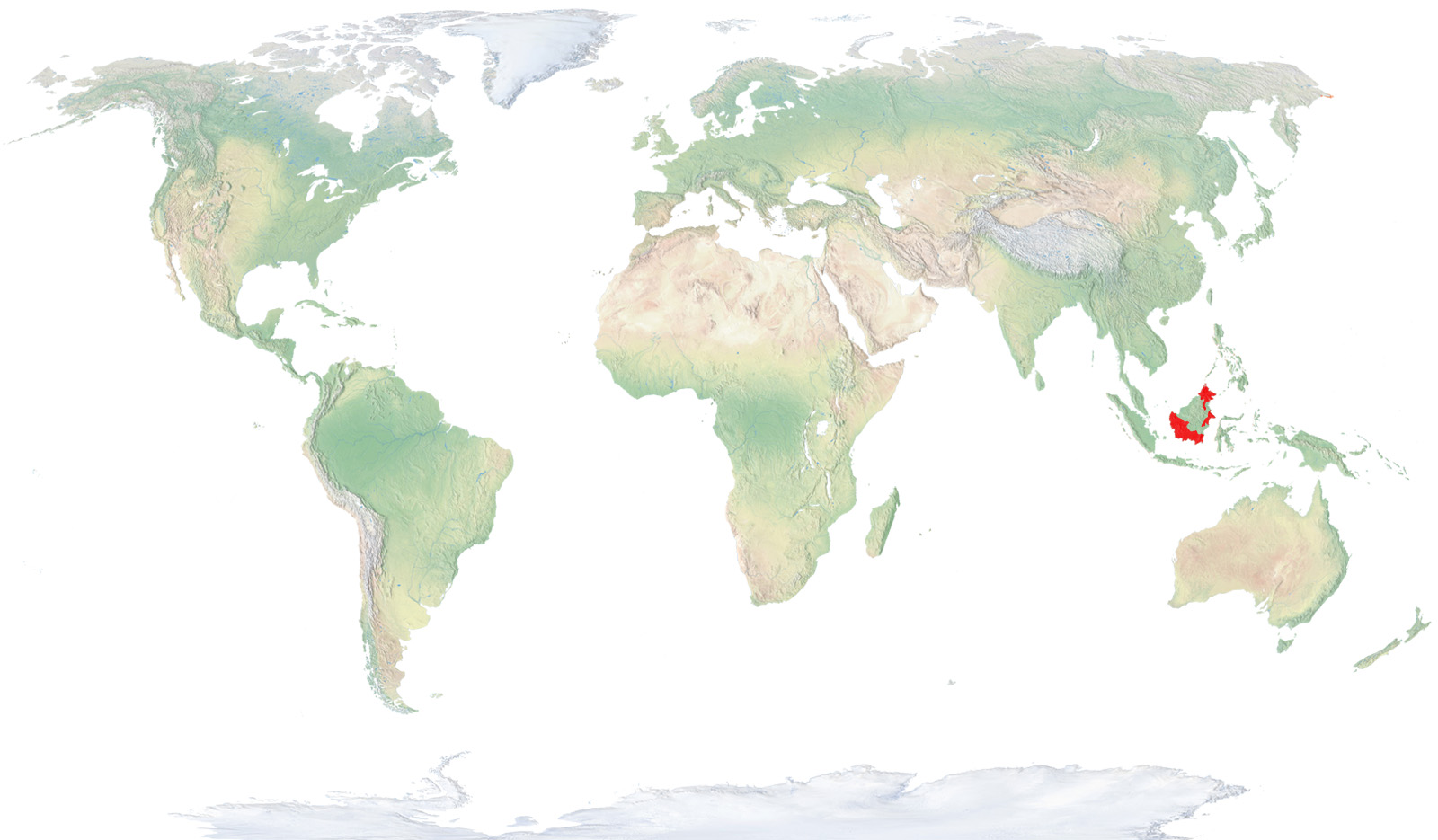
- Distribution / Resident
- Breeding
- Wintering
- Subspecies
Risk level
- Extint
- Extint in the wild
- Critically endangered
- In Danger
- Vulnerable
- Near threatened
- Minor concern
- Insufficient data
- Not evaluated
Taxonomy
Physical characteristics
Biology
Reproduction
Biology
The orangutan is distinguishable by its long reddish hair and its arms, much longer than its legs. Males, almost twice as large as females, develop a large throat poach that acts as a voice box when they roar to establish their territory. Moreover, they have folds of fibrous tissue on their cheeks that deform their faces, giving them a peculiar appearance.
Primary and secondary tropical and subtropical rainforests, from sea level to 1,500 m of altitude.
With an almost strictly vegetarian diet, it feeds on all types of marram grass, fruits, leaves and bark, although it occasionally eats insects, eggs and small vertebrates.
Gestation lasts for almost one year and a single baby is born each time. The infants are nursed and live with the mother until they are almost three years old, period on which they are carried on the back. They are not fully independent until they reach puberty, when they are 7 to 10 years old.
This species is totally arboreal, moving nimbly between the branches of trees via brachiation and rarely descending to the ground. This species is diurnal, building nests with branches and leaves in the forks of considerably tall trees, in which it sleeps at night.
Unlike gorillas and chimpanzees, they do not live in family groups, but are instead solitary, only relating to their fellow animals during mating season. Each male defends a territory of some dozen square kilometres in which several different females can live, but from where any other male attempting to enter is expelled.
Until recently, scientists believed only one orangutan species existed, Pongo pygmaeus, with two different subspecies: P.p. pygmaeus, the Bornean orangutan, to which the specimens at the Barcelona Zoo belong, and P.p. abelli, the Sumatran orangutan. However, recent genetic studies seem to prove that these two island populations actually belong to two different species, which is of great importance in regard of their conservation in the wild and the handling and maintenance of the species in captivity.
Like their relatives –the gorilla and chimpanzee- nowadays they are critically endangered, due to the destruction of the rainforest, excessive direct hunting and to the capture of the young infants to be kept as pet animals.
The Zoo of Barcelona participates in the EEP (European Captive Breeding Programme) of orangutans, which has achieved great reproductive success, as four specimens have been born at the zoo in the last years.



